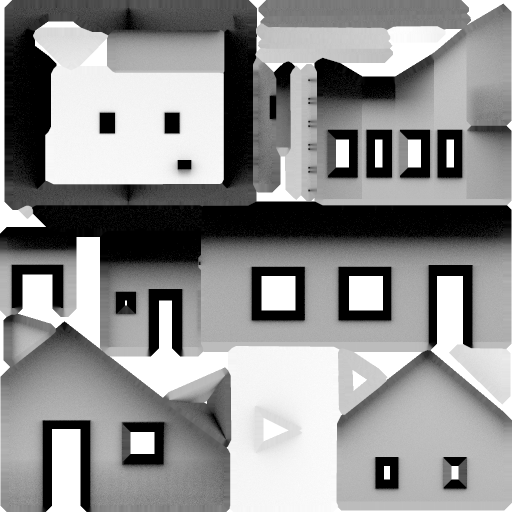Ambient Occlusion
When we shade a fragment we consider only the fragment and the light source. We don't consider any other surfaces. That means some features are missing from our scenes:
- Shadows. A surface doesn't know if the path to the light source is blocked, so we don't know when a fragment's illumination level should be darkened because another model is casting its shadow.
- Reflections. A surface doesn't receive any light from any other other model, so we don't get mirrors or indirect illumination on surfaces that face away from the light source.
There are workarounds to these limitations. We've seen some already. We added an ambient term to give the feeling that light is bouncing around into areas that the light doesn't directly reach. We used environment mapping to make an object reflect the skybox.
If we want to add subtle self-shadows to a model, we may use a technique called ambient occlusion. We compute ambient occlusion at a location on a model by placing a hemisphere at the location, oriented along the normal. Then we cast out many rays in all directions within the hemisphere. If a ray hits another part of the model, then we have found occluding geometry that blocks some light from reaching the location. If all rays hit occluders, then the location's ambient occlusion is 0. If no rays hit any occluders, then the ambient occlusion is 1.
Ambient occlusion is expensive to compute. It is therefore often computed in the 3D modeling tool, long before it reaches our renderer. The model is unwrapped onto a texture that is initially blank. Then each texel is visited. A hemisphere is placed at the 3D position that corresponds to the texel, and the rays are cast. The proportion of rays that do not hit occluders is stored in the texture.
Here's the ambient occlusion map for a house model:

The roof on the top left has hardly any occlusion, while the eaves are deeply in shadow.
During rendering, the fragment shader looks up the ambient occlusion from the ambient occlusion map and multiplies the lighting terms by it. The depth cues from ambient occlusion are surprisingly strong, even with no shading applied:
Rotate the house and zoom in and out. Use the controls to contrast the ambient occlusion map to diffuse shading.
Like the other workarounds, ambient occlusion is not grounded in reality. The computed occlusion terms are really just probabilistic measures of whether or not light reaches a fragment. No light sources are even considered when the texture is generated by the 3D modeling tool.